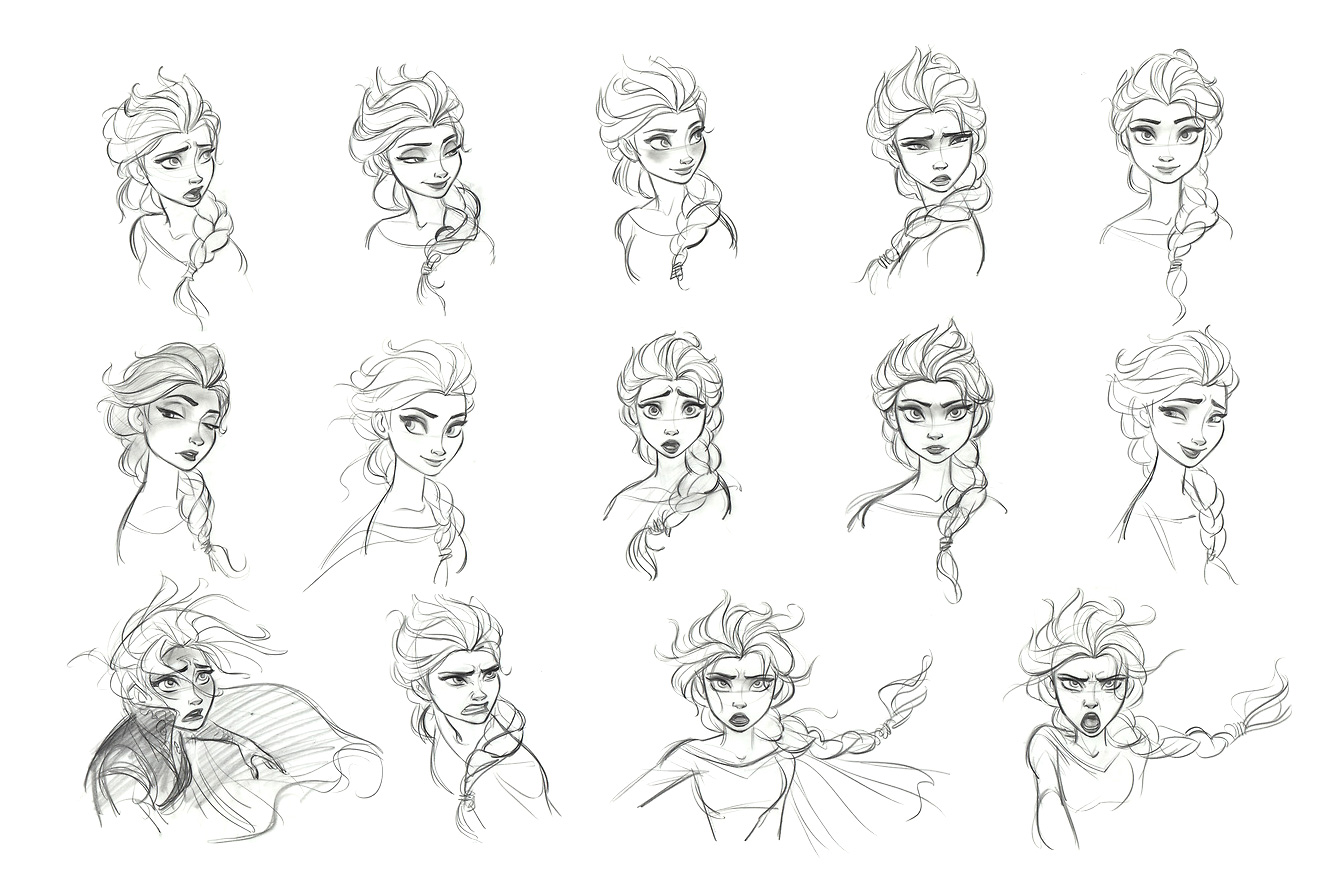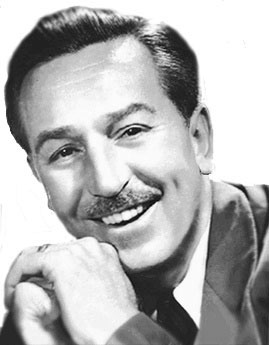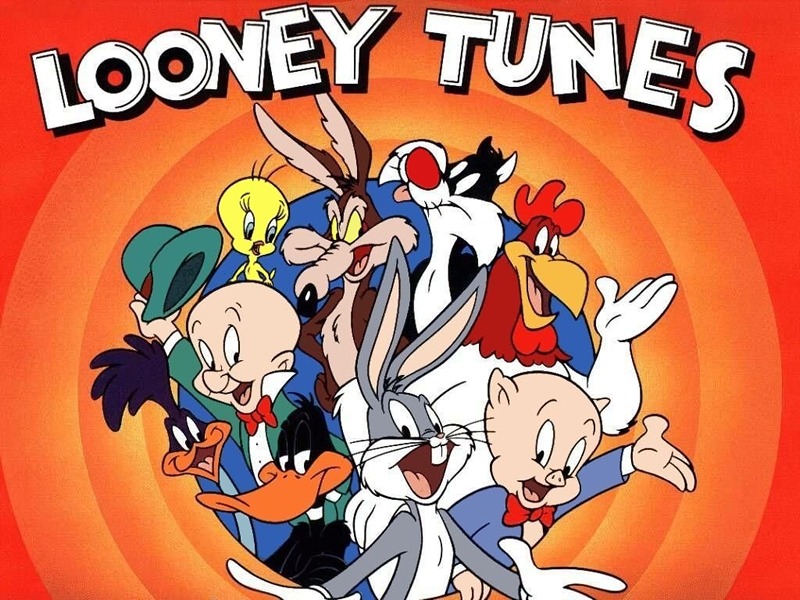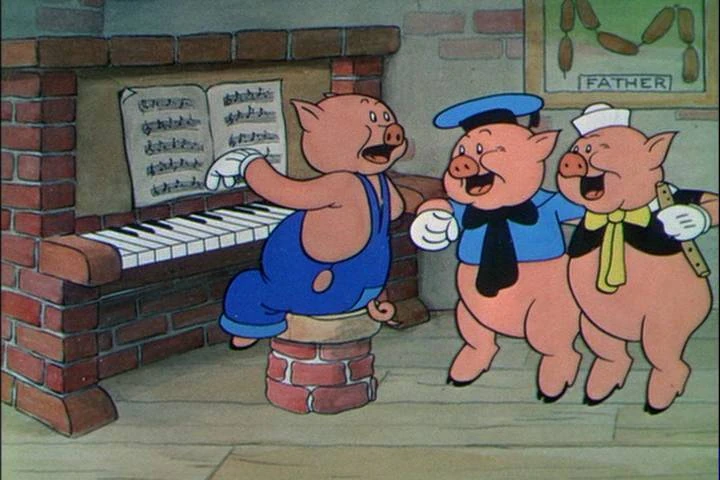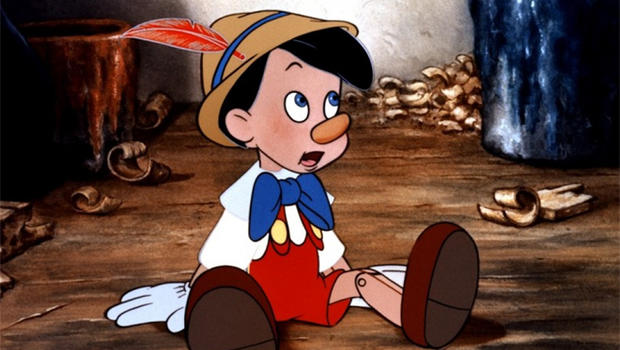
When it comes to success in virtually any medium, sometimes the glory and praise can go to your head. The more praise each animator received for their work on Snow White and the Seven Dwarfs, the more these animators began to shirk off challenges and what it truly meant to become a true animator. By 1938, as audiences flocked to see their masterpiece, Walt Disney and his staff set out to work on their next sleight of animated films, they had found the next project they knew they could work with (as they were struggling with making Bambi work). They used the story created by a man in Italy who was dubbed Carlo Collodi, which told the story of a wooden puppet who wanted to become a real boy. But the actually written book of Collodi's was very little like the finished product. The lead was an arrogant, disobedient, class clown who struggled constantly with doing what was right and wrong. And as the success of Snow White went to their heads, work on Pinocchio was stalled constantly by differing points of view and the overall unlikeablity of their main character. With his next project in shambles, Walt personally stepped in and threw away virtually the entire film (a trend that would continue at the studio for many years), and forced his animators to start from scratch. This included a complete overhaul of the character of Pinocchio, who was changed into a wide-eyed and curious innocent who was too naive to understand the dangers that lurked right in front of him. But the most important addition came, coincidentally, by a subtraction.
Animator Ward Kimball, who was an animator on Snow White, had animated a scene in the film of the dwarfs eating their first meal with the princess. But when Walt decided to delete the scene, a crestfallen Kimball considered leaving the studio. But Walt came back to him to become the supervising animator on one of the most important characters in this film (who was ironically one of the least important in Collodi's original story). The character of Jiminy Cricket proved to be so integral to the plot of the film, that Walt knew no mere vocal actor could provide a voice adequate enough. In stepped in Cliff "Ukulele Ike"Edwards, the first real celebrity cast into a Disney Film. Edwards, unlike many of his peers prior to the 1980's, was immediately entranced by the concept of animation and took the role of Pinocchio's conscience and ran with it.
Pinocchio would prove to be one of Walt's most ambitious films. Many elements not explored in Snow White were now being fully realized. Some animation fans seem to forget that animators today have thousands of reference pages to figure out how to animate things. But the original animators had to learn how to animate even the most simple of things, such as waves in the water, the movements of joints, how a marionette would move, and how a person or cricket would move underwater. Walt spared no expense to try to outdo his and his staffs efforts in Snow White and it clearly showed throughout the film. The film was also the key stepping stone for the group that would later become known as "The Nine Old Men". While still young and eager, these animators were slowly becoming the keys to the animation department. While Ward Kimball would animate Jiminy Cricket, fellow animators Frank Thomas and Milt Kahl would help animate Pinocchio himself and Wolfgang Reitherman would animate the vicious Monstro the Whale.
Monstro himself would require extensive experimentation with new sounds for the film. Before there was a cataloged sound bank for animators and editors to use, these animators would have to recreate the sounds with whatever was available to them. For instance, with the shoes worn by the Seven Dwarfs, one of the sound designers discovered a humorous idea to bend an old leather wallet back and forth. For this film, Disney Animators knew that they would need new sounds to better make the things in the film believable. For example, a harpsichord was brought in to convey the sounds of the Blue Fairy's enchanted entrances and exits throughout scenes in the film. Whistles, pans, and various other household objects would be used to better reflect the cartoonish realism that the animators hoped to bring out of their drawings.
Leigh Harline and Ned Washington were behind the films music, while Paul Smith was brought in to work with Harline on the film's score. The films songs, like the songs in Snow White, were meant to carry the picture in a way no one had thought of prior (remember that Rodgers and Hammerstein would not find success until 1942). The most memorable song from the film is "When You Wish Upon a Star" which has since become one of the most acclaimed songs in film history and has since become the anthem of the Disney Studio.
Pinocchio is regarded by many (including myself) as the most technically perfect animated film in history. The richness applied to each and every frame shows even 76 years later. The film is constantly referred to for it's experimentation in all sorts of animation circles and is heralded as a milestone in the history of the medium. It was the first animated film to win the Academy Award for Best Original Song and Best Score, setting a precedence the company would try to strive for for many years to come. Yet despite the absolute adoration from critics, the film was an immense box office failure in 1940, failing to profit on it's $2,300,000 budget. This was due to the outbreak of World War II in Europe cutting off a vital overseas market for the studio to draw on, despite earning over one million dollars in the domestic market. Pinocchio would also regrettably start a trend that Disney Films would suffer through throughout the 1940's, losing the studio more money than they could have possibly imagined.
By 1936, the popularity of Mickey Mouse had fallen behind the likes of Popeye the Sailor, the Looney Toons, and even his own fellow Disney property, Donald Duck. This prompted Walt to begin planning an extravagant Silly Symphony for Mickey to make a return to popularity. Unlike other Silly Symphonies, this film would have no dialogue and would be carried entirely on an orchestral piece of music and the sweeping animation. Using the score behind Paul Duka's classical piece, "The Sorcerer's Apprentice" Walt began to pour Snow White's profits into the short. But as the cost quickly became too much for an animated short to recoup, Walt and his brother Roy shrugged and decided to make numerous musically inclined shorts into one massive production. The animators planned out more than a dozen pieces of music, ultimately shortening it to eight pieces with their own various animated events taking place within. The pieces included the works of Bach, Tchaikovsky, Stravinsky, Mussorgsky, and Beethoven and would cover the entire spectrum of music.
The Philadelphia Orchestra was brought in, along with conductor Leopold Stokowski to record the sweeping orchestral scores needed for "The Concert Feature" as it was being dubbed. Numerous scheduling issues occurred between Walt and Stokowski, with the former being occupied with Pinocchio and other animated projects, but with both of them passionate about this film being as perfect as possible, the two marched along in the production. In fact, Stokowski was so passionate about the film, that he was the one to suggest the name Fantasia.
In order to make Fantasia as realistic a concert going experience as possible, Walt and Roy contacted RCA with the hopes of creating a sound system that would make it sound as though the orchestra was actually playing for the audiences. With financial backing from the studio, Walt's engineers and RCA head David Sarnoff would create "Fantasound" a pioneering stereophonic surround sound system which unknowingly innovated many of the processes used nowadays, including simultaneous multi-track recording, overdubbing, and noise reduction.
Fantasia was completed in the Fall of 1940, but like Pinocchio before it, it was a failure at the box office. However, unlike Pinocchio, the film was not as warmly received as one would believe. It would take many years to garner the critical praise it deserved.
"That Cat and Mouse Cartoon"...
 While the outbreak of World War II hindered Disney's creation of his full-length animated films, animated shorts thrived in this era of doubt and fear as they had in the Depression. While the Looney Toons and Popeye were still the top drawers of Warner Bros. and Paramount respectively, the only major distributor without a cartoon team was MGM. Throughout the late 1930's, the studio was experimenting with their own animation department. One such short was directed and animated by two animators: William Hanna and Joseph Barbera. These two would create the short "Puss Gets the Boot", in which a cat and a mouse do battle over whether or not the cat deserved to be kicked out of his house by an impatient owner. While not officially named as such yet, these two characters, Jasper and Jinx, would ultimately become the two masters of slapstick in the history of animation.
While the outbreak of World War II hindered Disney's creation of his full-length animated films, animated shorts thrived in this era of doubt and fear as they had in the Depression. While the Looney Toons and Popeye were still the top drawers of Warner Bros. and Paramount respectively, the only major distributor without a cartoon team was MGM. Throughout the late 1930's, the studio was experimenting with their own animation department. One such short was directed and animated by two animators: William Hanna and Joseph Barbera. These two would create the short "Puss Gets the Boot", in which a cat and a mouse do battle over whether or not the cat deserved to be kicked out of his house by an impatient owner. While not officially named as such yet, these two characters, Jasper and Jinx, would ultimately become the two masters of slapstick in the history of animation. Despite premature judgments that the immensely popular short could not compete with the Looney Toons, Hanna and Barbera would spearhead the campaign to turn them into a series involving the never ending struggle between a cat and a mouse. Within time, "Tom and Jerry" would become the most beloved cartoon series of the lot. With a repetitive but easily interchangeable formula, the battles between the arrogant yet clumsy Tom and his rival Jerry Mouse were quickly becoming the stuff of legends. With humor ranging from brutally painful injuries, to explosions, to referential humor, this comedic marvel would delight audiences for generations in numerous reincarnations over the years, though the original cartoons remain the most beloved and acclaimed. In fact, for seven successive years, a Tom and Jerry short would win the Academy Award for Best Animated Short, forever breaking the string of success Disney had had prior.
Disney's Delight and Despair

Box office failures was not the only thing worrying Walt Disney in the early 1940's. The unionization of Hollywood finally reached the animation departments in the form of the Screen Cartoonists Guild. Led by union organizer Herbert Sorrell, they began to target the animators in Hollywood to ensure that all animators were properly represented. Max Fleischer had already lost a battle with the unions, but Sorrell knew the biggest prize in the pool was Walt Disney Productions.
Walt was adamant that he would not unionize without the consent of his animators, or "my boys" as he called them. When Sorrell refused to wait, he led almost half of the studio on strike, including one of Walt's most trusted animators, Art Babbitt. The strike delayed the productions of both Dumbo and Bambi and hindered the more loyal animators efforts to complete those films. The strike lasted for five weeks until Walt ultimately conceded and allowed his animators to unionize. But when many of the triumphant animators went to work the next day, they found themselves without jobs. Walt had fired many of them, including Babbitt, who tried to sue his way back into a job, but ultimately left the studio and took another job. This feud between once good friends would last until Babbitt was on his last days in the early 1990's.
 The strike had left a significant impact on Walt, whom had always looked at his animators as his family. But with their "Bolshevik" ways, Walt would never have the kind of intimate relationship with his animators again, and it even wiped away his passion for animation, which would drift later on in his life. It left his staff running on fumes as they struggled to complete their fourth animated movie, Dumbo. Unlike Pinocchio and Fantasia, which were viewed as pioneering achievements in the art of animation, this film in particular was a simplistic yet emotionally riveting journey of an elephant looking to get accepted by his circus despite having abnormally large ears.
The strike had left a significant impact on Walt, whom had always looked at his animators as his family. But with their "Bolshevik" ways, Walt would never have the kind of intimate relationship with his animators again, and it even wiped away his passion for animation, which would drift later on in his life. It left his staff running on fumes as they struggled to complete their fourth animated movie, Dumbo. Unlike Pinocchio and Fantasia, which were viewed as pioneering achievements in the art of animation, this film in particular was a simplistic yet emotionally riveting journey of an elephant looking to get accepted by his circus despite having abnormally large ears. The film's heart was it's emotions, with many tear-jerking moments that would make even adult men cry. The result was a smash success that Disney was relieved to have had. The film made a profit on it's otherwise minimal budget of $950,000. The film was so popular in the Fall of 1941, that Time Magazine planned to make Dumbo himself the cover of their magazine for December 1941. But a few weeks later, with the Japanese attack on Pearl Harbor, everything in America changed. With America now involved in the war, U.S. Army personnel installed at the Disney Studios and what little money Walt had now being steered towards the war effort, all the success around the release of Dumbo was muted.
 Despite the exhausted monetary and space constrictions imposed on the studio, Walt and his staff were allowed to complete work on his next pet project, Bambi. Unlike Dumbo, this film was another vital step to the completion of the evolution of Walt's team. Work had begun on this film during the completion of Snow White, but complications arose from Walt's desire to make the film as realistic as possible. This resulted in the film taking a heavy naturalistic tone in it's art style. The contrast between the deer that help Snow White clean the Dwarfs cottage and Bambi here are so stark that it's almost mind-boggling that this was made five years prior. This kind of study involved studying films of wild deer in the forests, bringing in two fawns (appropriately named Bambi and Faline) to study, and also going out into the woods to see deer firsthand.
Despite the exhausted monetary and space constrictions imposed on the studio, Walt and his staff were allowed to complete work on his next pet project, Bambi. Unlike Dumbo, this film was another vital step to the completion of the evolution of Walt's team. Work had begun on this film during the completion of Snow White, but complications arose from Walt's desire to make the film as realistic as possible. This resulted in the film taking a heavy naturalistic tone in it's art style. The contrast between the deer that help Snow White clean the Dwarfs cottage and Bambi here are so stark that it's almost mind-boggling that this was made five years prior. This kind of study involved studying films of wild deer in the forests, bringing in two fawns (appropriately named Bambi and Faline) to study, and also going out into the woods to see deer firsthand. But the realism covered the entire film and not just the animals. Everything from the trees in the forest, the babbling brooks, even raindrops. This was due to the master work of animator Tyrus Wong. Wong had been hired by Walt after showing him some impressionistic paintings of the woods. His backgrounds were so stylized, he was named the art director of the film, allowing him to use his personal style of more detailed animation in the center of the frame, drawing more attention to the film.
Bambi was released during the heart of the African and Pacific theaters of the war, and like Pinocchio and Fantasia had failed to garner a profit. Once again, Walt was left in a dire predicament, and he was losing more and more artists to the draft. He would need a serious miracle to save his business.
The Best of Times and The Worst of Times...
 Patriotism often brings out the worst in people, no matter the era. It sees your country as infallible and immune from flaw. This kind of "Blind Patriotism" is something I personally despise, as it hinders everything the Bill of Rights protected. No greater could the flaws of this era (be it at war or not) be seen than in the cartoons released during the war effort. All animation studios in Hollywood were conscripted to create training cartoons alongside morale boosting propaganda and even racially insensitive cartoons. To be fair to these times, this was all drawn towards America's ever heightening hatred towards both the Japanese and the Nazis. All cartoons from the Looney Toons, Popeye, and Disney were all being used to create cartoons to make the enemy look like barbaric and incompetent buffoons or savage monsters. While many of these cartoons are almost impossible to find, some of the studios have found the courage to release these shorts with commentary about the time and what the government and animators wanted to show the public as the war raged across the globe. Some of these cartoons were actually praised, one in particular being "Der Furhers Face", a cartoon starring Donald Duck in Nazi Germany. It spawned a hit song and even won the Oscar in 1943.
Patriotism often brings out the worst in people, no matter the era. It sees your country as infallible and immune from flaw. This kind of "Blind Patriotism" is something I personally despise, as it hinders everything the Bill of Rights protected. No greater could the flaws of this era (be it at war or not) be seen than in the cartoons released during the war effort. All animation studios in Hollywood were conscripted to create training cartoons alongside morale boosting propaganda and even racially insensitive cartoons. To be fair to these times, this was all drawn towards America's ever heightening hatred towards both the Japanese and the Nazis. All cartoons from the Looney Toons, Popeye, and Disney were all being used to create cartoons to make the enemy look like barbaric and incompetent buffoons or savage monsters. While many of these cartoons are almost impossible to find, some of the studios have found the courage to release these shorts with commentary about the time and what the government and animators wanted to show the public as the war raged across the globe. Some of these cartoons were actually praised, one in particular being "Der Furhers Face", a cartoon starring Donald Duck in Nazi Germany. It spawned a hit song and even won the Oscar in 1943. But not all of the cartoons made around this time were morale boosting propaganda. In an era where America was not yet ready for the end of segregation, we saw some of the worst cartoons of racial insensitivity in the history of the medium. In fact, these cartoons were so horrifically racist towards African Americans and other races, that in 1968, eleven of these cartoons were placed on a list known as the Censored Eleven. While most of the cartoons on the list were Looney Toons cartoons, many of the other studios have also pulled back on some of their cartoons. One of the most famous Tom and Jerry cartoons, The Little Orphan, has been removed from TV due to complaining due to the "insensitivity" about Mammy Two Shoes" who was a black woman and also Tom's original owner. In fact, most of the original "Mammy Two Shoes" cartoons were pulled from circulation in the 1960's and have been almost impossible to see unless you own the DVDs.
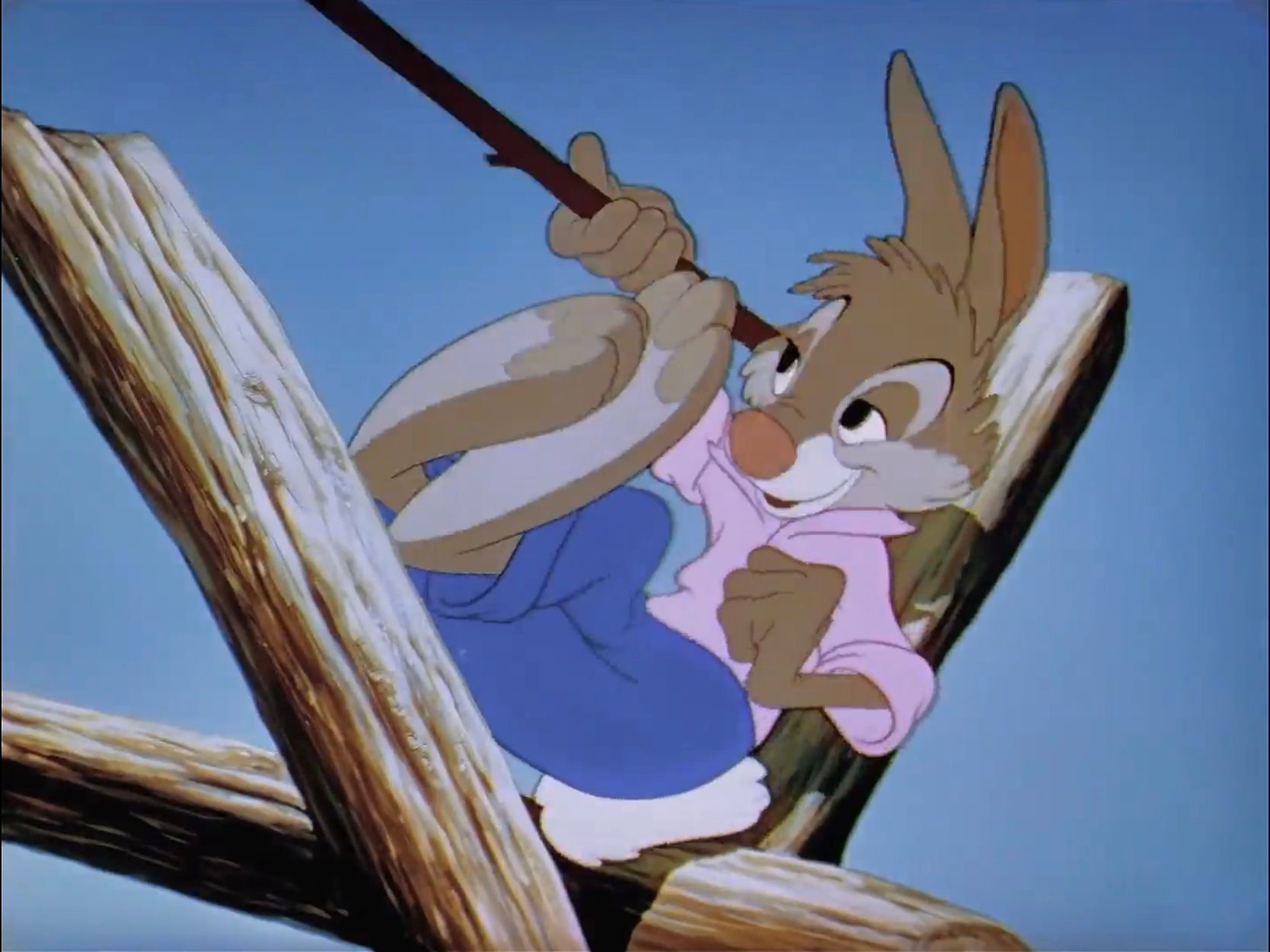 But by far the most headscratching of bans and hiding from public view came from what should be acclaimed as one of the biggest achievements in the history of animation. In 1946, after years of wading in mediocrity at the studio, Disney released Song of the South, a hybrid film combining actual human actors with animated backgrounds and characters. The usage of live actors was now allowing Walt and his brother some breathing room and enabled them to have more money to do with what they needed for the studio.
But by far the most headscratching of bans and hiding from public view came from what should be acclaimed as one of the biggest achievements in the history of animation. In 1946, after years of wading in mediocrity at the studio, Disney released Song of the South, a hybrid film combining actual human actors with animated backgrounds and characters. The usage of live actors was now allowing Walt and his brother some breathing room and enabled them to have more money to do with what they needed for the studio. The film takes place in the Reconstruction era in American history on a former plantation. The racism towards the likes of Uncle Remus (the main black actor in the film), was not necessarily justified but instead understandable as the South was still a very repressive place in the 1870's. But the insensitivity is not nearly as gruesome as in Gone With the Wind, which is praised as a great American classic. But the backlash from the NAACP and many African American communities was enough for Disney to pull the film from American homes and theaters in the 1980's and has seen zero traction of being available in the US anytime soon. But racism is far from this film's biggest crime. The film, with the exception of the animated bits, which are perfectly fine, is a bit of a bore, and that is why I can not say I will give this film a positive review when the review comes out. Nevertheless, the film was a success at the box office and allowed Disney to keep treading water.
The Era of Change...
.jpg) World War II had certainly hindered the progress animation had been making in the 1930's. But the medium had survived through the likes of classic shorts from the Looney Toons and Tom and Jerry among others. As the war ended, these shorts were still revered and beloved by children and adults of all ages. But as the 1940's began to draw to an end, the medium that had once been seen as ever-expanding was beginning to show signs of recession. The 7-8 minute shorts, while still popular, were starting to rise in costs once more and the receipts that films were getting fluctuated with the year, prompting many studios to begin to cut down their departments to it's barest essentials. But while the cartoon shorts made for theaters began to die out, cartoons would find solace in a new medium: television.
World War II had certainly hindered the progress animation had been making in the 1930's. But the medium had survived through the likes of classic shorts from the Looney Toons and Tom and Jerry among others. As the war ended, these shorts were still revered and beloved by children and adults of all ages. But as the 1940's began to draw to an end, the medium that had once been seen as ever-expanding was beginning to show signs of recession. The 7-8 minute shorts, while still popular, were starting to rise in costs once more and the receipts that films were getting fluctuated with the year, prompting many studios to begin to cut down their departments to it's barest essentials. But while the cartoon shorts made for theaters began to die out, cartoons would find solace in a new medium: television. Many of the animators who had lost their jobs during the 1941 strike had taken it upon themselves to start up their own animation company. United Productions of America (or UPA), had moved away from the strict realism of the Disney studio and had animators should be allowed to freely design any character in any shape or volume they wanted. UPA was the pioneer of this, creating cartoons and shows such as Mr. Magoo and Gerald McBoing Boing, which utilized this new style. This style would be evocative of the decade of the 1950's, as Hanna Barbera and Disney would also follow in suit.
Disney in particular had taken advantage of the public's taste for the newer and broadened scope of animation, allowing stylists like Mary Blair to animate things such as "Once Upon a Wintertime" and "Johnny Appleseed" in their Package Project film, Melody Time. Blair would go on to animate for the more important Disney films in the 1950's, but her art style was heavily compromised in her finished products.
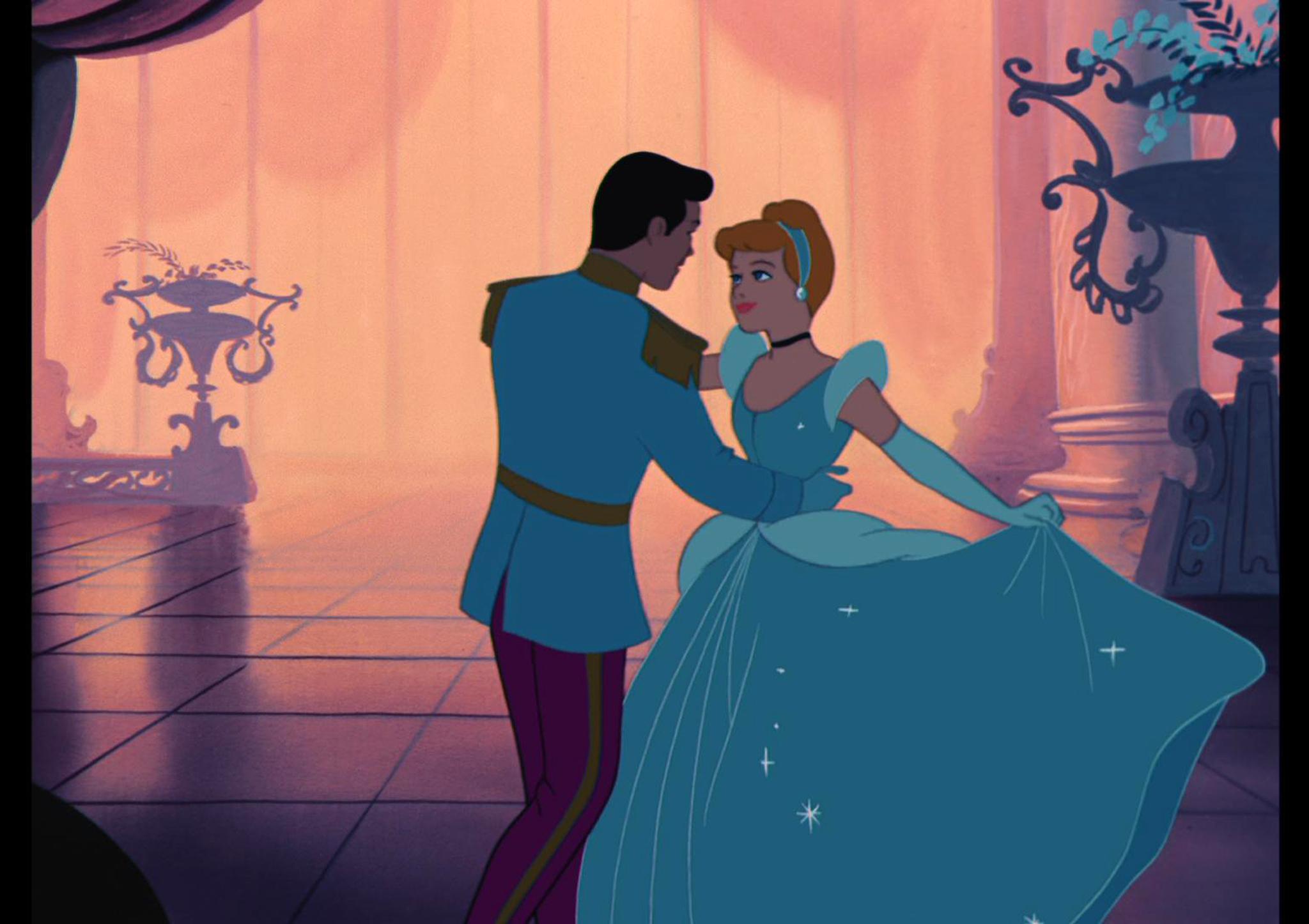 Throughout the 1940's, in order to keep the studio afloat, Disney had created a sleight of "Package Projects" which were elongated or basic shorts of projects the studio did not have the time nor the money to experiment with. For example, The Wind in the Willows, Jack and the Beanstalk, Bongo, and The Legend of Sleepy Hollow were all planned to be their own feature length films, but were packaged together as shorts to create the films Fun and Fancy Free and The Adventures of Ichabod and Mr. Toad. The problem was that while these films were well received by critics, they did not make the profits Disney was in serious need of. Despite re-releases of Pinocchio, Snow White and the Seven Dwarfs, and Bambi being successful, they did not recoup the serious amount of debt Disney had incurred by the late 1940's. Walt needed money in order to reboot his animation department. The result was a return to the fairy tale with his twelfth animated film, Cinderella.
Throughout the 1940's, in order to keep the studio afloat, Disney had created a sleight of "Package Projects" which were elongated or basic shorts of projects the studio did not have the time nor the money to experiment with. For example, The Wind in the Willows, Jack and the Beanstalk, Bongo, and The Legend of Sleepy Hollow were all planned to be their own feature length films, but were packaged together as shorts to create the films Fun and Fancy Free and The Adventures of Ichabod and Mr. Toad. The problem was that while these films were well received by critics, they did not make the profits Disney was in serious need of. Despite re-releases of Pinocchio, Snow White and the Seven Dwarfs, and Bambi being successful, they did not recoup the serious amount of debt Disney had incurred by the late 1940's. Walt needed money in order to reboot his animation department. The result was a return to the fairy tale with his twelfth animated film, Cinderella.Cinderella made great use out of the ink lines that Walt had always loved in his earlier work. Unlike the clearly definable lines in the works of UPA and Warner Bros., the ink lines in this film are so beautiful, they transcend the boundaries and actually let us feel as though we'd been brought into this fantasy world created for us. The result was Disney's biggest box office hit since Snow White, earning the film about $7 million dollars in revenue and helped the studio recover from it's depression in the 1940's.
Cinderella's immense success prompted Walt to unleash his next sleight of animated films into the market. Alice in Wonderland, Peter Pan, and Lady and the Tramp were released to varying degrees of success, with Lady and the Tramp being the most successful of the three commercially and critically. But unlike with the previous films Disney had worked on, something had changed about these three in particular. Walt was no longer heavily involved in the animation department. His interests in his studio were drifting. Walt had become a pioneer in television, creating shows like "Mickey Mouse Club", "Davy Crockett" and the "Disneyland" anthology series. Not only that, but he was hard at work on the construction of Disneyland Park in Southern California and had greater interest in his live action projects, including a nature series and films like Treasure Island, Old Yeller, and 20,000 Leagues Under the Sea. But it wasn't as though Walt did not trust his animation team. Instead, he knew he could trust them more than ever and let them be for most of the decade.
The Nine Old Men and the 12 Basic Principles of Animation
Many years after their work at Disney was complete, Johnston and Thomas wrote and published animation anthologies that described exactly how they did what they did in their earlier days, even updating the book in 1999. In these books, the animators went in depth on a major talking point in the medium even to this day: The 12 Basic Principles of Animation. The purpose of these principles was to produce an illusion of characters adhering to the basic laws of physics, while also delving into the more subtle things like emotional timing and character appeal. The 12 Principles are as follows:
1. Squash and Stretch - The most important principle. Defined as the purpose of giving a sense of weight and flexibility to drawn characters. In cartoon animation, a figure stretched and squashed to an exaggerated degree is viewed as comical. But in feature animation, the key is that the figure or object's volume is NOT changed when stretched or squashed.
2. Anticipation - Anticipation is used to prepare the audience for action, and to make the action appear more realistic (IE, a golfer raising his club back before stroking, or a dancer bending her knees before jumping). In animation, it is used for these purposes along with more cinematic purposes like a character looking off screen to anticipate the arrival of a new character.
3. Staging - The purpose of Staging is to direct the audience's full attention and make it clear what is of great importance in a scene. A close up on a face (such as the infamous glare of Lady Tremaine), the usage of light and shadows in a scene, and position of the "camera".
4. Straight Ahead Action and Pose to Pose - While often categorized in schools as two separate entities, these two are often incorporated into the same scenes. Straight Ahead Action is animating a complete frame of animation, which allows for more fluid, dynamic illusion of motion and is best used in actions scenes. Pose to Pose, on the other hand, involves animating the most important details in a frame and moving on to complete the animation later. Pose to Pose is best used in dramatic or emotional scenes, as you are able to keep your focus more on the characters and less on the action.
5. Follow Through and Overlapping Action - Like #4, these two are two entities often combined into one lesson, as both focus on the laws of inertia and physics. Follow Through focuses on the continuation of movement despite the object having seized it's initial voluntary or involuntary movement (stopping yourself from running off a cliff does not stop your weight from trying to push you forward). Overlapping Action is the actual tendency of parts of the body to move at separate rates. As with #1, the more exaggerated the movement, the more comical it is viewed by the audience.
6. Slow in and Slow Out - As in the real world, human and animal movements require time to both accelerate and slow down. In order to make the illusion more realistic, a scene uses more frames of animation at the beginning and end of every movement, with less being given towards the in between moments (such as a sword swing).
7. Arc - Most natural action tends to follow an arched trajectory, and animation should adhere to this principle by following the arcs for greater realism. The Arc is used in sketching a scene or a character if that character happens to have their head or another body part in an unusual position.
8. Secondary Actions - Adding more Secondary Actions to a scene allows the audience to believe in the scene more. If a character is running, they would likely be waving their arms or their head would bounce as their body moved. Ignoring this principle of movement and physics makes a scene much less believable.
9. Timing - Timing refers to the number of drawings and frames for a given action, which translates to the speed of the film. The more frames used to illustrate a scene, the more slowly the action takes place on screen. Timing is also essential in for establishing a character's mood, emotion, and reaction.
10. Exaggeration - The more realistic looking the character or scene, the more static and dull the cartoon looks. That is why animators for decades have employed Exaggeration to allow a film or scene to look only as realistic as needed. A film like Alice in Wonderland requires greater exaggeration than a film like Bambi. Exaggeration can range from a simple facial contortion to an explosion of magic.
11. Solid Drawing - The principle of Solid Drawing means taking into account forms of three-dimensional space, basically giving an drawing greater volume and weight. This requires an animator to be skilled in determining the weight, shadows cast, and anatomy of a drawing. An animator with no knowledge of depth and three-dimensional space will never achieve the greatness of his peers (this is something I will heavily criticize when I talk about flash animation in a later paragraph).
12. Appeal - All of the knowledge of realism, dimensional space, and staging will mean nothing if the drawing does not Appeal to the audience. An audience needs to run the gambit of emotions as they watch your animation, from revulsion, to joy, to sorrow, to anger, to fear. A villain can be just as appealing (if not sometimes more appealing) than the hero, as is the case in Sleeping Beauty. The important thing with regards to Appeal is that the viewer feels that the character is real and interesting.
 The 12 Principles would be put to the ultimate test as the 1950's drew to a close and the animators worked tirelessly on their sixteenth animated film, Sleeping Beauty. In order to make this new Fairy Tale stand out in comparison to earlier works like Snow White and Cinderella, Walt assigned Eyvind Earle to be the art director of the film. Earle's ambitious look at the unicorn tapestries that covered medieval art and sculptures would shape the dramatic art styles needed for this serious undertaking. But while Earle was backed heavily by an increasingly diverted Walt, his animators began to rebel for a few reasons. First and foremost, many of the color designs Earle had selected (particularly with the Three Good Fairies), had given their dresses black blouses, anchoring them to the ground in their scenes masquerading as mortal woman. Secondly, because Earle's backgrounds were so stylized, they detracted attention from the characters on screen, violating one of the Principles. Nevertheless, Walt backed Earle throughout his tenure at the studio.
The 12 Principles would be put to the ultimate test as the 1950's drew to a close and the animators worked tirelessly on their sixteenth animated film, Sleeping Beauty. In order to make this new Fairy Tale stand out in comparison to earlier works like Snow White and Cinderella, Walt assigned Eyvind Earle to be the art director of the film. Earle's ambitious look at the unicorn tapestries that covered medieval art and sculptures would shape the dramatic art styles needed for this serious undertaking. But while Earle was backed heavily by an increasingly diverted Walt, his animators began to rebel for a few reasons. First and foremost, many of the color designs Earle had selected (particularly with the Three Good Fairies), had given their dresses black blouses, anchoring them to the ground in their scenes masquerading as mortal woman. Secondly, because Earle's backgrounds were so stylized, they detracted attention from the characters on screen, violating one of the Principles. Nevertheless, Walt backed Earle throughout his tenure at the studio.The massively detailed drawings used in the film would require a larger film prints than usual. All of the previous animated films utilized 35 millimeter prints to be projected in the most basic of movie theaters. But in order for the full depth of the film to be realized, Walt decided to have the film distributed in 70 millimeter prints for Large Format Cinemas, in the traditions of the movie epics like Ben-Hur and Lawrence of Arabia. The overall cost of the film was a staggering $6 million dollars, the most expensive project in the company's history and more than double the cost of Cinderella. Sleeping Beauty premiered in 1959 to underwhelming critical responses and the film failed to turn a profit despite being the second highest grossing film of the year. However, like Pinocchio and Fantasia, the film would gain severe momentum in later years and would be revered as one of the best in the mediums history.
The End of an Era...
Sleeping Beauty signaled the end of one of the best eras in the history of animation, but the feeling was not just a Disney matter. Throughout Hollywood, by the end of the 1950's, the public's view of animation and film in general was beginning to shift. As worldly events like the Cold War and the Civil Rights movement took precedence, the meaning behind escaping to theater became less important. As a result, the larger scale film studios began to cut back budgets and even slashed their staff of workers. Frustrated by MGM's lack of interest in retaining the animation studio, William Hanna and Joseph Barbera moved on from the studio and created their own studio, Hanna-Barbera, which would go on to produce an immense amount of cartoon shows that would have both an immensely positive and immensely negative impact on the next age of animation.
MGM passed along the production of Tom and Jerry cartoons throughout the next decade, resulting in the duo's fall from grace by the end of the 1960's. The Looney Toons popularity would fluctuate over the next decade, losing immense popularity in theaters with the outbreak of television, but also thriving on the new medium. The Popeye cartoons would follow a similar path to the Looney Toons, but would not receive the same love that their rivals would receive on television.
The failure of Sleeping Beauty forced Walt to make drastic changes in his animation studio. More than half of his staff lost their jobs, forcing Walt to limit his team to it's barest essentials, relying more and more on the Nine Old Men and a few others for their work and less on the immense workers he'd had in the era. As Walt looked to ways to create more animated films at a fraction of the cost, the result would, despite the best intentions, be one of the defining tropes of what many consider to be the darkest era in the history of animation. The days of the beautiful ink lines and hand-painted animated films came to an abrupt ends along with the 1950's. What lay ahead would be disaster for the medium, disaster that almost drowned the entire medium along with it.


